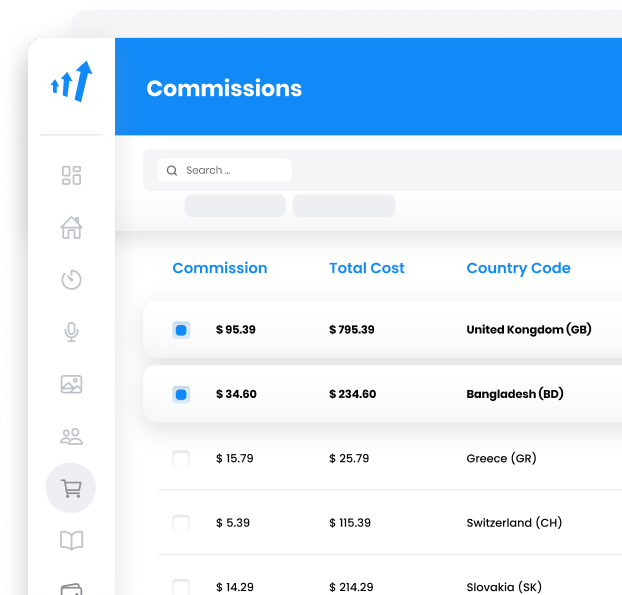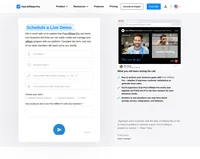What Are Content Types in Affiliate Marketing?
Content types in affiliate marketing refer to the various formats and styles of content that marketers use to promote products or services. By leveraging different content types, affiliate marketers can effectively target and engage their audience, enhance their brand presence, and optimize their marketing funnels for better conversions.

Key Content Types in Affiliate Marketing
1. Blog Posts
Blog posts are a foundational content type for affiliate marketers. They allow marketers to delve into topics relevant to their niche, providing valuable information and insights to their audience. Blog posts can include product reviews, how-to guides, and personal experiences, all while naturally integrating affiliate links.
Benefits:
Increases organic traffic through SEO: By employing SEO strategies such as keyword research, content optimization, and backlinking, blog posts can significantly boost organic traffic. Utilizing tools like Google’s Keyword Planner or SEMrush helps in identifying high-traffic keywords relevant to the affiliate products.
Builds authority and trust with readers: Regularly publishing valuable content establishes the marketer as an expert in the niche, which in turn builds trust and credibility with the audience.
Provides opportunities for detailed product endorsements: Blog posts offer ample space for detailed descriptions, reviews, and endorsements, allowing marketers to thoroughly explain the benefits and features of affiliate products.
2. Product Reviews
Product reviews are critical for affiliate marketers as they provide an in-depth analysis of a product’s features, benefits, and drawbacks. Honest and comprehensive reviews help build credibility and influence purchasing decisions.
Benefits:
Establishes the marketer as a knowledgeable authority: Detailed reviews demonstrate expertise and provide valuable insights, positioning the marketer as a trusted source of information.
Attracts targeted traffic from search engines: Consumers often search for reviews before purchasing, and well-optimized product review posts can capture this high-intent traffic.
Directly influences consumer buying decisions: By presenting both pros and cons, reviews help consumers make informed decisions, which can lead to higher conversion rates.
3. Comparison Articles
Comparison articles or videos juxtapose similar products, highlighting their pros and cons. This content type helps consumers make informed choices by presenting clear, unbiased comparisons.
Benefits:
Builds trust through transparency: By offering balanced views and honest comparisons, these articles foster trust among readers.
Engages readers who are in the decision-making phase: Consumers comparing products are often close to making a purchase, making this content highly effective.
Often ranks well for high-intent search queries: Keywords like “Product A vs Product B” are common among users ready to convert, providing opportunities for high rankings.
4. Tutorials and How-To Guides
Tutorials and how-to guides provide step-by-step instructions on using a product or achieving a specific outcome. They are educational and add value by demonstrating practical applications of a product or service.
Benefits:
Positions the marketer as an expert: Providing useful, actionable advice establishes the marketer as a knowledgeable resource.
Increases engagement through actionable content: Readers appreciate content that helps them solve problems or achieve goals, leading to higher engagement and sharing.
Seamlessly incorporates affiliate links as solutions to problems: By naturally integrating affiliate products into solutions, marketers can drive conversions while providing value.
5. Videos
Video content, particularly on platforms like YouTube, offers a dynamic way to engage audiences. Videos can include reviews, tutorials, unboxings, and more, providing a visual and auditory experience that builds trust and interest.
Benefits:
Engages audiences through multimedia: Videos combine visual and auditory elements, which can capture and retain attention more effectively than text alone.
Ranks well on video platforms and search engines: Optimized video content can perform well on platforms like YouTube and appear in search engine results, driving additional traffic.
Retains viewer attention longer than text-based content: The dynamic nature of video can hold attention longer, increasing the likelihood of conversion.
6. Social Media Posts
Social media posts leverage platforms like Facebook, Instagram, and TikTok to reach and engage a vast audience. They provide a direct line to potential customers and can include product highlights, reviews, and user-generated content.
Benefits:
Increases brand visibility and reach: Social media platforms offer vast networks of potential customers, enhancing brand exposure.
Allows for real-time interaction with audiences: Engaging directly with users builds relationships and trust.
Easily shareable content that can go viral: Social media posts have the potential to reach a wide audience quickly through shares and viral content.
7. Email Marketing
Email campaigns remain a powerful tool for affiliate marketers. Through newsletters and personalized emails, marketers can maintain relationships with their audience and promote products effectively.
Benefits:
Direct and personal communication channel: Email allows for personalized communication, which can increase engagement and conversion rates.
High return on investment: Email marketing is known for its effectiveness in generating sales and leads.
Allows for segmented and targeted campaigns: Marketers can tailor emails to specific audience segments for more relevant and effective messaging.
8. Infographics
Infographics are visual representations of information that simplify complex data into an easily digestible format. They are particularly effective for showcasing product features or industry statistics.
Benefits:
Engages audiences visually: Infographics attract attention with visual appeal and can convey complex information quickly.
Highly shareable across platforms: The visual nature of infographics makes them ideal for sharing on social media and other platforms.
Conveys information quickly and clearly: Infographics can communicate key points effectively, making them useful for educational and promotional purposes.
9. E-Books and Guides
E-books and guides offer in-depth knowledge on a particular subject, often with integrated affiliate links. They serve as lead magnets, encouraging users to provide their contact information in exchange for valuable content.
Benefits:
Positions the marketer as an expert in the field: Comprehensive guides demonstrate expertise and authority.
Generates leads and builds an email list: Offering valuable content in exchange for contact information helps grow an audience.
Provides comprehensive information to readers: E-books and guides can cover topics in depth, providing significant value to readers.
10. Podcasts
Podcasts are audio content that allows marketers to engage their audience through storytelling and discussions. They can feature interviews, product discussions, and industry insights.
Benefits:
Builds a loyal audience through regular episodes: Regular podcast episodes can generate a dedicated following.
Engages listeners during their daily routines: The audio format allows for consumption during activities like commuting or exercising.
Offers a platform for in-depth discussions: Podcasts provide opportunities for detailed exploration of topics and products.
11. Case Studies
Case studies present real-world examples of how a product or service solved a problem or achieved specific results. They provide tangible proof of a product’s value and effectiveness.
Benefits:
Builds trust through evidence-based content: Real-world examples validate claims and build credibility.
Demonstrates real-world applications and benefits: Case studies show how products work in practical scenarios.
Engages B2B audiences particularly well: Business audiences often rely on case studies for decision-making.
12. Landing Pages
Landing pages are standalone web pages designed to convert visitors into leads or customers. They focus on a single call-to-action, such as signing up for a newsletter or making a purchase.
Benefits:
Optimized for conversions: Landing pages are tailored to achieve specific goals, such as capturing leads or driving sales.
Allows for precise targeting of specific audience segments: Marketers can create multiple landing pages for different offers or audiences.
Provides a focused environment for promoting an offer: With minimal distractions, landing pages encourage visitors to take action.
13. Listicles
Listicles are articles presented in a list format, such as “Top 10 Products for XYZ.” They are easy to read and provide concise information on multiple products or services.
Ranks well in search engines for list-based queries: Search engines favor listicles for their structured content and easy readability.
Benefits:
Engages readers with a clear and structured format: The list format is appealing and easy to navigate.
Increases the likelihood of click-throughs on affiliate links: Listicles often present multiple options, encouraging exploration.

Frequently Asked Questions
What are the different content types?
There are many different content types such as press releases, articles, and blogs.
Why are content types important?
Content types are important because they help to structure content for a specific purpose. This lets the reader know what kind of content to expect.
How to keep your affiliates happy with split commissions
Discover how Post Affiliate Pro's SplitCommission™ feature can boost affiliate motivation and engagement by fairly distributing commissions among all contributors to a sale. Learn how to implement this innovative model to enhance your affiliate program's success.
Explore Post Affiliate Pro's comprehensive Affiliate Marketing Glossary to enhance your industry knowledge with easy-to-understand definitions of essential terms. Perfect for marketers seeking to understand the fundamentals and advanced concepts, this glossary helps you master the language of affiliate marketing. Visit now to boost your expertise!
A guide to different types of affiliate tracking
Explore the comprehensive guide on affiliate tracking methods like cookie, postback URL, and IP tracking to optimize your affiliate marketing strategy. Learn how Post Affiliate Pro's advanced software ensures precise tracking, maximizes sales, and provides exceptional support for seamless affiliate cooperation. Unlock your brand's potential with cutting-edge tracking solutions today!
Discover the essential role of affiliate software in managing and optimizing your affiliate marketing programs. Learn how it streamlines link tracking, referral management, and commission payments, ensuring data security and fraud prevention. Unlock growth opportunities with efficient program management and boost your business's reach and ROI. Visit now to explore the benefits of investing in affiliate software!
Discover Post Affiliate Pro's flexible pricing plans tailored to fit your business needs, with options for Pro, Ultimate, and Network packages. Enjoy a free trial with no credit card required, no setup fees, and the freedom to cancel anytime. Benefit from features like unlimited affiliates, advanced reporting, customizable interfaces, and lifetime support. Save up to 20% with annual billing and take advantage of more than 220 integrations. Perfect for businesses seeking to enhance their affiliate marketing efforts. Visit now to find the ideal plan for you!










